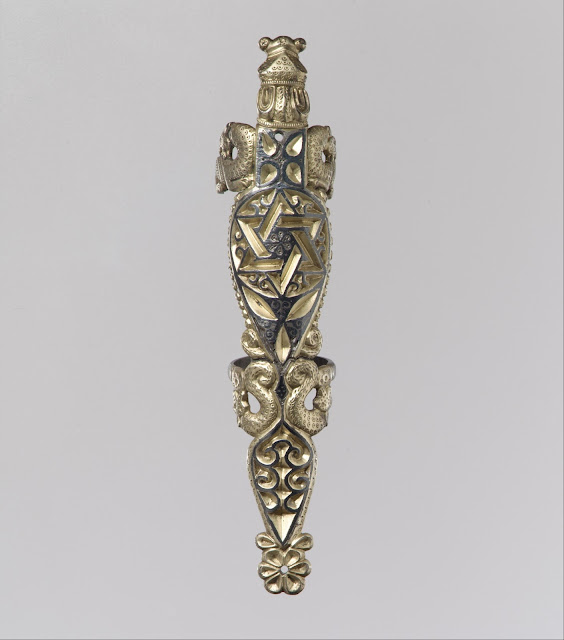The Vermand Treasure
The Vermand Treasure was discovered in the last quarter of the nineteenth century by Benoni Lelaurain. It was recovered from a cemetery near the modern village of Vermand, which is located beside the Celtic oppidum of Viromandui. In the 3rd century CE, Vermand served as a castra hiberna within the network of provincial Roman border defenses. It was also a thriving glass production center and home to a large number of refugees following the destruction of Augusta Viromanduorum in the late 3rd century by barabarian invaders.
The treasure was found in one of the few military burials in the cemetery. However, grave robbers had previously plundered the burial, cracked the stone sarcophagus and scattered the contents. Perhaps they had been interrupted in their violation of the grave as six objects including this gilt silver spear shaft mount were left behind. Others, documented in the excavation report, remained as well but it is thought the excavator's workmen pilfered the hilt of a sword and the majority of objects, held at the the Musée Lécuyer in St. Quentin "disappeared" by the end of World War I. These objects included an iron battle-ax head, ten small javelin heads, a lance head of iron inlaid with silver and copper, two small belt buckles with ferrets, an oval silver plaque, fragments of a sword blade and one or two more small bronze objects.
The grave was likely that of an auxiliary soldier. The six-pointed interlaced star seen on the mount was not at that time a Jewish symbol. It appears as a decorative motif in both Roman and Germanic art.
The objects were originally thought to be Merovingian artifacts dating from the 4th - 7th centuries but were reevaluated by The Metropolitan Museum of Art's curator of medieval art and reclassified as late Roman dating to the second half of the 4th century CE.
Image: Gilt silver (niello) mount for a spear shaft from the Vermand Treasure 400 CE courtesy of the Metropolitan Museum of Art.
The treasure was found in one of the few military burials in the cemetery. However, grave robbers had previously plundered the burial, cracked the stone sarcophagus and scattered the contents. Perhaps they had been interrupted in their violation of the grave as six objects including this gilt silver spear shaft mount were left behind. Others, documented in the excavation report, remained as well but it is thought the excavator's workmen pilfered the hilt of a sword and the majority of objects, held at the the Musée Lécuyer in St. Quentin "disappeared" by the end of World War I. These objects included an iron battle-ax head, ten small javelin heads, a lance head of iron inlaid with silver and copper, two small belt buckles with ferrets, an oval silver plaque, fragments of a sword blade and one or two more small bronze objects.
The grave was likely that of an auxiliary soldier. The six-pointed interlaced star seen on the mount was not at that time a Jewish symbol. It appears as a decorative motif in both Roman and Germanic art.
The objects were originally thought to be Merovingian artifacts dating from the 4th - 7th centuries but were reevaluated by The Metropolitan Museum of Art's curator of medieval art and reclassified as late Roman dating to the second half of the 4th century CE.
Image: Gilt silver (niello) mount for a spear shaft from the Vermand Treasure 400 CE courtesy of the Metropolitan Museum of Art.




Comments
Post a Comment